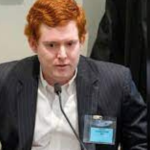Redefining Traditional Narratives
In the world of storytelling, we have grown accustomed to certain archetypes: the heroic protagonist and the malevolent antagonist. However, “The Main Character is the Villain 23” flips this conventional formula on its head, presenting a narrative where the main character assumes the role of the antagonist. This intriguing twist challenges our perceptions of right and wrong, blurring the lines between hero and villain.
Embracing Complexity in Character Development
“The Main Character is the Villain 23” delves into the complexities of human nature and the multi-faceted dimensions of characters. The main character, despite being the focal point of the story, exhibits qualities that are typically associated with antagonists. This departure from traditional narratives provides a unique opportunity for character development, as we explore the motivations, conflicts, and struggles of a character who does not fit the mold of a traditional hero.
Unveiling Inner Conflicts
As we follow the journey of the main character in “The Main Character is the Villain 23,” we bear witness to their internal conflicts. They grapple with their actions, choices, and the consequences of their decisions. This internal struggle humanizes the character, revealing vulnerabilities and flaws that resonate with the audience. The character’s struggle becomes a reflection of our own battles with our darker impulses, making the narrative all the more relatable.
Subverting Expectations
“The Main Character is the Villain 23” subverts the audience’s expectations, keeping them on the edge of their seats throughout the story. We are compelled to reevaluate our assumptions about characters and the roles they play. This unexpected twist challenges us to look beyond traditional storytelling norms and embrace the complexity of human behavior.
Exploring the Shades of Gray
This unconventional narrative approach prompts us to explore the shades of gray in morality. It questions the simplistic dichotomy of good versus evil and challenges us to consider the factors that shape a character’s choices. As the main character’s journey unfolds, we are drawn into the moral ambiguity of their actions, forcing us to confront our own beliefs about right and wrong.
Examples of “The Main Character is the Villain 23”
Numerous works of literature and film have embraced this captivating narrative twist. For instance, in the novel “Gone Girl” by Gillian Flynn, the main character, Amy Dunne, is revealed to have a manipulative and sinister side, turning the traditional victim narrative on its head.
Another example is “Breaking Bad,” a TV series where the protagonist, Walter White, evolves from a mild-mannered chemistry teacher to a ruthless drug lord, blurring the lines between hero and villain.
The Impact on Audience Perception
“The Main Character is the Villain 23” has a profound impact on the audience’s perception of the story and its characters. It challenges us to reevaluate our sympathies and allegiances, as we find ourselves torn between rooting for and against the main character. This internal conflict heightens our emotional investment in the narrative, making the storytelling experience all the more engaging.
A Catalyst for Thoughtful Discussions
The narrative approach of “The Main Character is the Villain 23” sparks thoughtful discussions and debates among audiences. Viewers and readers analyze the character’s actions, motivations, and moral dilemmas, leading to discussions about the complexities of human nature. This thought-provoking aspect of the story fosters a deeper connection with the narrative and encourages viewers and readers to explore the intricacies of the human psyche.
The Evolution of the Main Character
“The Main Character is the Villain 23” often portrays a dynamic evolution in the main character’s personality. They may undergo a transformational arc, grappling with their darker impulses and making decisions that challenge their previous beliefs and values. This evolution creates a riveting narrative that captivates the audience, drawing them further into the story’s twists and turns.
Conclusion:
“The Main Character is the Villain 23” exemplifies the power of narrative storytelling to challenge, provoke, and inspire. This unconventional approach redefines traditional hero-versus-villain dynamics, offering a fresh perspective on character development and moral ambiguity. As we immerse ourselves in this captivating tale, we are reminded that human nature is multifaceted and that characters, like people, are not defined solely by their roles. “The Main Character is the Villain 23” serves as a testament to the richness of storytelling, sparking thoughtful conversations about morality, choices, and the nature of humanity. This narrative twist invites us to embrace the complexities of character, encouraging us to explore the shades of gray that define us all.










